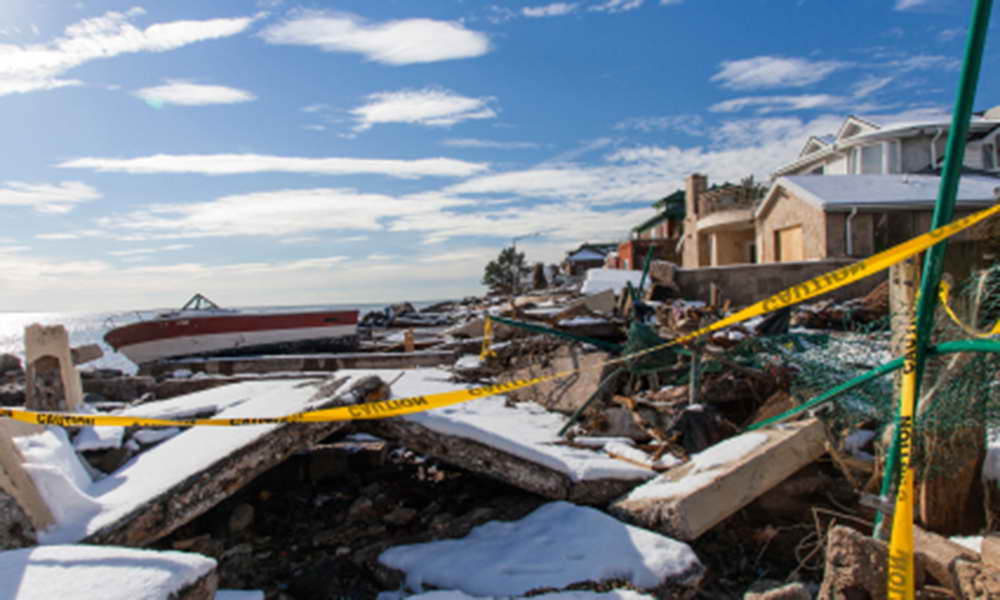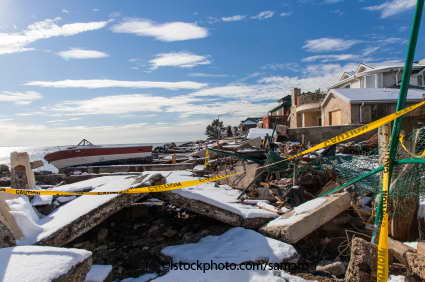December 4, 2012
12/4: Almost Two-Thirds Expect Another Storm
NY1/Marist New York City Poll
The toll of Hurricane Sandy surprised many in New York City, but residents are bracing for another hit. 64% of residents believe it is likely or very likely the city will face another weather emergency of Sandy’s strength in the next year. This includes 21% who say it is very likely and 43% who report it is likely. About one in five — 21% — don’t think the possibility is very likely while 8% say it is not likely at all. Seven percent are unsure.
But, will New York City be ready to battle another fierce storm? Nearly three in four residents express confidence that the Big Apple will be able to respond to future natural disasters. Included here are 12% who are very confident in the city’s ability and 61% who are confident in it. About one in five people in New York City — 19% — are not too confident that New York City will be able to deal with another severe weather event, and 5% are not confident at all. Three percent are unsure.
Click Here for Complete December 4, 2012 NYC NY1-Marist Poll Release and Tables
“New Yorkers think the city needs to brace itself for another storm,” says Dr. Lee M. Miringoff, Director of The Marist College Institute for Public Opinion. “Next time, many think the city will be ready.”
Residents who were most affected by Hurricane Sandy, that is, those who experienced three or more hardships, are less confident the city will be prepared. Still, 61% of these residents are, at least, confident that the city will be ready for another natural disaster. This compares with 73% of those who were directly affected, those who experienced at least one hardship related to Hurricane Sandy, and 72% who were not affected at all.
Many in New York City have learned a lesson from Hurricane Sandy. 67% report they will be better prepared the next time they face a severe weather forecast. 30% will be about as prepared as they were during Sandy while only 3% think they will not be as well prepared. Among those who were most affected, 80% report they will be better prepared in the future.
Table: Possibility of Another Emergency Weather Event in the Next Year
Table: Confidence in New York City’s Ability to Respond to Future Disasters
Table: Personal Preparedness to Handle Future Severe Weather Forecasts
Mandatory Evacuations Okay, Says Majority
55% of residents in New York City believe the city should force people to leave their homes in the event of severe weather. But, more than four in ten residents — 42% — believe it should be an individual’s decision. Three percent are unsure.
While a majority of those who were most affected — 52% — support mandatory evacuations, 44% believe it should be an individual’s decision. Those most affected are slightly less likely to support mandatory evacuations than those who were not directly affected by Hurricane Sandy — 58%. 39% of these residents think people should make their own choice.
58% of New York City adults say, if they were ordered to leave their home or office due to a severe weather forecast, they would go immediately. 31% would wait until concerns about their loved ones were addressed while 9% would not leave. Only one percent is unsure.
47% of those who were most affected would leave immediately. 34% of these residents would make sure issues pertaining to their loved ones are in order, and 14% would not leave. Five percent are unsure.
While nearly seven in ten New York City adults — 69% — say they have someplace safe to go if they are ordered to leave their home, nearly three in ten — 29% — do not. Two percent are unsure.
Table: Should the City Force People to Evacuate Before Severe Weather Events?
Table: Immediacy of Evacuation If Ordered to Do So
Table: Safe Evacuation Location
In the Flood Zone: Six in Ten Support Rebuilding Homes…Not So for Nursing Homes
60% of New York City adults believe homeowners should be allowed to rebuild their homes in a flood zone. One-third — 33% — don’t think houses should be reconstructed in these areas. Eight percent are unsure.
65% of New York City residents most affected by Hurricane Sandy and 63% of those directly affected by the storm say homeowners should be permitted to rebuild their homes in flood zones. This compares with 56% of those not directly affected Sandy.
However, 64% of residents don’t believe nursing homes should be allowed to operate in flood zones. 31% disagree and think these facilities should be permitted. Five percent are unsure.
Table: Should Homeowners be Allowed to Rebuild in Flood Zones?
Table: Should Nursing Homes be Allowed to Operate in Flood Zones?
Most Felt Well-Informed about Hurricane Sandy…TV Leading News Source
88% of New York City adults say they were well-informed about Hurricane Sandy. 10% felt out of touch, and two percent were unsure. Even 74% of those who were most affected by the storm report they were well-informed.
How did city dwellers receive their information about the hurricane? 62% mostly watched television. 13% turned to the Internet while 9% listened to the radio. Five percent spoke with family and friends. Three percent got their information from calls or texts they received on their cell phones while the same proportion — 3% — read the newspaper. One percent picked up calls on their home phone while 1% followed the latest news on Twitter. Two percent received their information from another source or are unsure.
Among those who were the most affected, 29% got their news from TV, 23% tuned into the radio, and 21% went online. 11% kept up-to-date thanks to friends and family. Seven percent received information either by call or text to their cell phones, and 3% were updated via Twitter. Six percent used another source or are unsure.
Table: Amount of Information about Hurricane Sandy
Table: Source of Information about Hurricane Sandy
The Personal Toll of the Storm, By the Numbers
What types of losses did New York City residents experience due to Hurricane Sandy?
- 28% of adults in the city lost vacation time or wages because of the storm. 72% did not.
- One in four households citywide — 25% — lost electricity for more than a day. 75% did not. In Staten Island, 71% experienced a power outage for longer than a day.
- More than one in five households — 22% — lost heat for longer than a day. 78% did not. 61% of Staten Island households were without heat for more than 24 hours.
- 19% of adults citywide have a member of their household who suffered property damage. 81% did not. Almost four in ten Staten Island residents — 37% — have a member of their household who had property damage.
Table: Loss of Vacation Time or Wages Due to Hurricane Sandy
Table: Loss of Electricity Due to Hurricane Sandy
Table: Loss of Heat Due to Hurricane Sandy
Table: Property Damage Due to Hurricane Sandy
Coming Together: New York Residents Offer Help Post-Sandy
In the aftermath of Hurricane Sandy, many New York City residents reached out to others in need.
- Nearly six in ten residents — 58% — donated food or clothes to families affected by the storm. Even 68% of those most affected and 61% of those directly affected by the storm did so.
- 52% of city residents gave money to people or neighborhoods in areas harmed by Hurricane Sandy.
- Three in ten adults citywide — 30% — volunteered their time to participate in storm-related events. 49% of residents most affected, 36% of those directly affected, and 23% of those not affected by the storm gave their time to these activities.
- More than one in four city dwellers — 26% — took part in cleanup efforts in their neighborhood or another area impacted by Sandy. 50% of those most affected by the storm, 31% of those directly affected, and 20% of those not affected helped in the cleanup effort.
Table: Donated Food or Clothes to Families Affected by the Storm
Table: Donated Money to People or Neighborhoods Affected by the Storm
Table: Volunteered Time for Activities Related to the Storm


